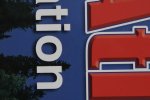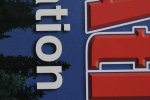DRB1313
Moderator
I am going to attempt explaining ISO, it's use and the effects it has on our photos.
What is ISO? ISO is basically the sensor's sensitivity to light.
The higher the number, the higher the sensitivity. ie: ISO100, 200, 400, 800, 1000, 1600.
What does this mean? Simply this: The higher the ISO you have, the faster shutter speed you will be able to achieve.
Edit!! Additon-- It allows us to shoot in lower light situations.
Why is this important? A couple of reasons.
1st. To take a photo without a flash and without a tripod (I'm talking handheld here), we must
have a shutter speed one step faster than the Focal length we are shooting at.
Let me explain, Let's say we are shooting a lens that is 100mm-400mm.
If we are at 100mm, we need a shutter speed of at least 1/125sec.
If we are at 200mm, we need a shutter speed of at least 1/250sec.
If we are at 400mm, we need a shutter speed of at least 1/500sec.
NOW, There are exceptions to this rule. (For you Smokey)
Cameras and lenses with image stabalization allow you to shoot shutter speeds below the focal length.
If you have nerves of steel, you can sometimes break this rule.
2nd. If we are shooting a subject that is moving we need a fast shutter speed.
The faster it is moving, the faster shutter speed we will need.
Bear with me as I take a rabbit trail for a minute and I'll bring
this all together.
We must first understand how f-stops (or Aperture) and shutter speeds work together.
As f-stops go up, shutter speeds go down.
Okay, A little bit about lenses and I will answer the question about where ISO comes in and Why it is important.
Zoom lenses (which most of us are using) have an f-stop rating on them.
Some examples 3.5-5.6, 4.0-5.6, & 2.8 to name a few. So. What this means is, If we are using the same 100-400mm lens with
the first example, 3.5-5.6, the fastest f-stop at 100mm will be 3.5 and the fastest f-stop available at 400mm would be 5.6 resulting
in a slower shutter speed at 400mm than at 100mm.
The reason I put the example 2.8 in red was because, #1, they are expensive and #2, with a 2.8 lens, you get
the 2.8 f-stop at 100mm and all the way out to 400mm which would give you the same shutter speed at
each end of the focal length.(100-400). A great advantage when speed is needed!!!
Let's tie this all together with a scenerio.
We are shooting the same lens(100-400mm f3.5-5.6). We do not have a flash or tripod at our disposal.
We are shooting outdoors and it's overcast.
Our subject is our dog running around in the front yard.
Although we have the reach of 400mm, we only need to be at 100mm.
How do we approach this shot so that we get the correct shutter speed to do both,
(Allow ourselves to handhold the shot and stop the motion of the running dog).
Here's what I would do:
I would set the camera to Aperture Priority.
I would dial the Aperture down to 3.5, because we now know that is going to give us the fastest shutter speed at 100mm.
After pressing the shutter button halfway down, we discover that our shutter speed is only 1/100sec.
This will not allow us to handhold the shot nor will it stop the motion of the running dog NOW WHAT?
ARE YOU READY?? Here is where ISO comes in to save the day.
Assuming we were at ISO 100, all we have to do is bump that up to ISO200 and try again.
If that's not a fast enough shutter speed, then bump it to ISO400 and so on, until we are getting a suitable shutter speed.
Now I know what you are thinking, The dog is pooped out and has gone inside by now
With practice you can do this in a matter of seconds if you learn where the controls are.
One Last Question, What is the disadvantage of using higher ISOs?
The higher the ISO, the more noise you will see in the photo. (Or that grainy look).
I have provided 5 examples of this effect shot with a Canon 20D.
They are all 100% crops of the same subject at different ISOs.
A couple of things to notice:
1. As everything stays constant except the iso, watch as the shutter speeds go up and the noise gets worse.
Especially in the Blues!!! and darker areas.
1. f5 ISO100 1/50sec.
2. f5 ISO200 1/100sec.
3. f5 ISO400 1/160sec.
4. f5 ISO800 1/400sec.
5. f5 ISO1600 1/800sec.
What is ISO? ISO is basically the sensor's sensitivity to light.
The higher the number, the higher the sensitivity. ie: ISO100, 200, 400, 800, 1000, 1600.
What does this mean? Simply this: The higher the ISO you have, the faster shutter speed you will be able to achieve.
Edit!! Additon-- It allows us to shoot in lower light situations.
Why is this important? A couple of reasons.
1st. To take a photo without a flash and without a tripod (I'm talking handheld here), we must
have a shutter speed one step faster than the Focal length we are shooting at.
Let me explain, Let's say we are shooting a lens that is 100mm-400mm.
If we are at 100mm, we need a shutter speed of at least 1/125sec.
If we are at 200mm, we need a shutter speed of at least 1/250sec.
If we are at 400mm, we need a shutter speed of at least 1/500sec.
NOW, There are exceptions to this rule. (For you Smokey)
Cameras and lenses with image stabalization allow you to shoot shutter speeds below the focal length.
If you have nerves of steel, you can sometimes break this rule.
2nd. If we are shooting a subject that is moving we need a fast shutter speed.
The faster it is moving, the faster shutter speed we will need.
Bear with me as I take a rabbit trail for a minute and I'll bring
this all together.
We must first understand how f-stops (or Aperture) and shutter speeds work together.
As f-stops go up, shutter speeds go down.
Okay, A little bit about lenses and I will answer the question about where ISO comes in and Why it is important.
Zoom lenses (which most of us are using) have an f-stop rating on them.
Some examples 3.5-5.6, 4.0-5.6, & 2.8 to name a few. So. What this means is, If we are using the same 100-400mm lens with
the first example, 3.5-5.6, the fastest f-stop at 100mm will be 3.5 and the fastest f-stop available at 400mm would be 5.6 resulting
in a slower shutter speed at 400mm than at 100mm.
The reason I put the example 2.8 in red was because, #1, they are expensive and #2, with a 2.8 lens, you get
the 2.8 f-stop at 100mm and all the way out to 400mm which would give you the same shutter speed at
each end of the focal length.(100-400). A great advantage when speed is needed!!!
Let's tie this all together with a scenerio.
We are shooting the same lens(100-400mm f3.5-5.6). We do not have a flash or tripod at our disposal.
We are shooting outdoors and it's overcast.
Our subject is our dog running around in the front yard.
Although we have the reach of 400mm, we only need to be at 100mm.
How do we approach this shot so that we get the correct shutter speed to do both,
(Allow ourselves to handhold the shot and stop the motion of the running dog).
Here's what I would do:
I would set the camera to Aperture Priority.
I would dial the Aperture down to 3.5, because we now know that is going to give us the fastest shutter speed at 100mm.
After pressing the shutter button halfway down, we discover that our shutter speed is only 1/100sec.
This will not allow us to handhold the shot nor will it stop the motion of the running dog NOW WHAT?
ARE YOU READY?? Here is where ISO comes in to save the day.
Assuming we were at ISO 100, all we have to do is bump that up to ISO200 and try again.
If that's not a fast enough shutter speed, then bump it to ISO400 and so on, until we are getting a suitable shutter speed.
Now I know what you are thinking, The dog is pooped out and has gone inside by now
With practice you can do this in a matter of seconds if you learn where the controls are.
One Last Question, What is the disadvantage of using higher ISOs?
The higher the ISO, the more noise you will see in the photo. (Or that grainy look).
I have provided 5 examples of this effect shot with a Canon 20D.
They are all 100% crops of the same subject at different ISOs.
A couple of things to notice:
1. As everything stays constant except the iso, watch as the shutter speeds go up and the noise gets worse.
Especially in the Blues!!! and darker areas.
1. f5 ISO100 1/50sec.
2. f5 ISO200 1/100sec.
3. f5 ISO400 1/160sec.
4. f5 ISO800 1/400sec.
5. f5 ISO1600 1/800sec.
Attachments
Last edited:











